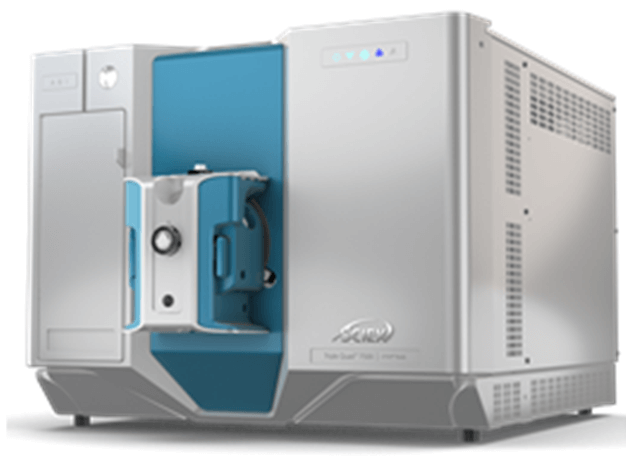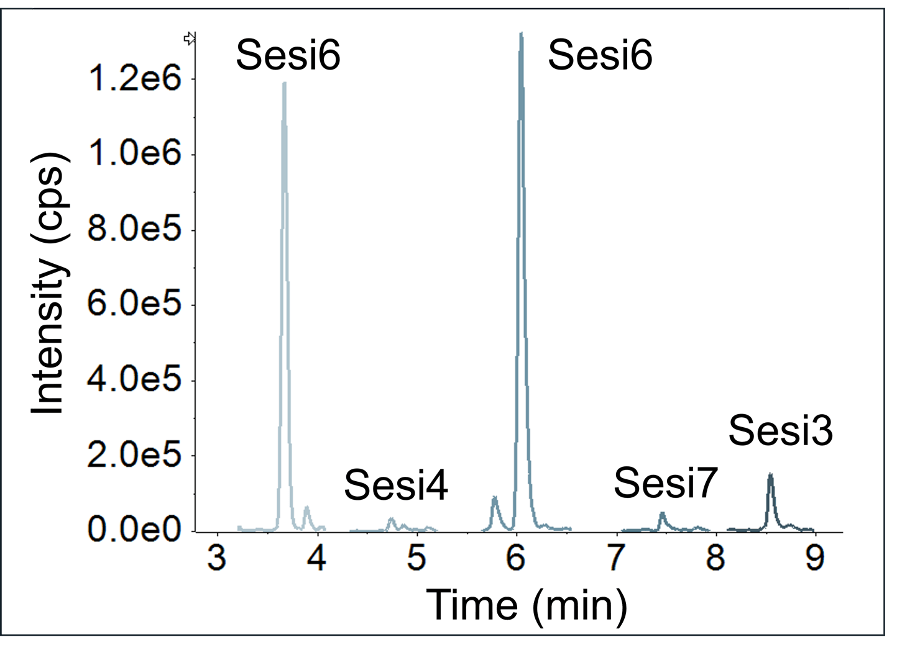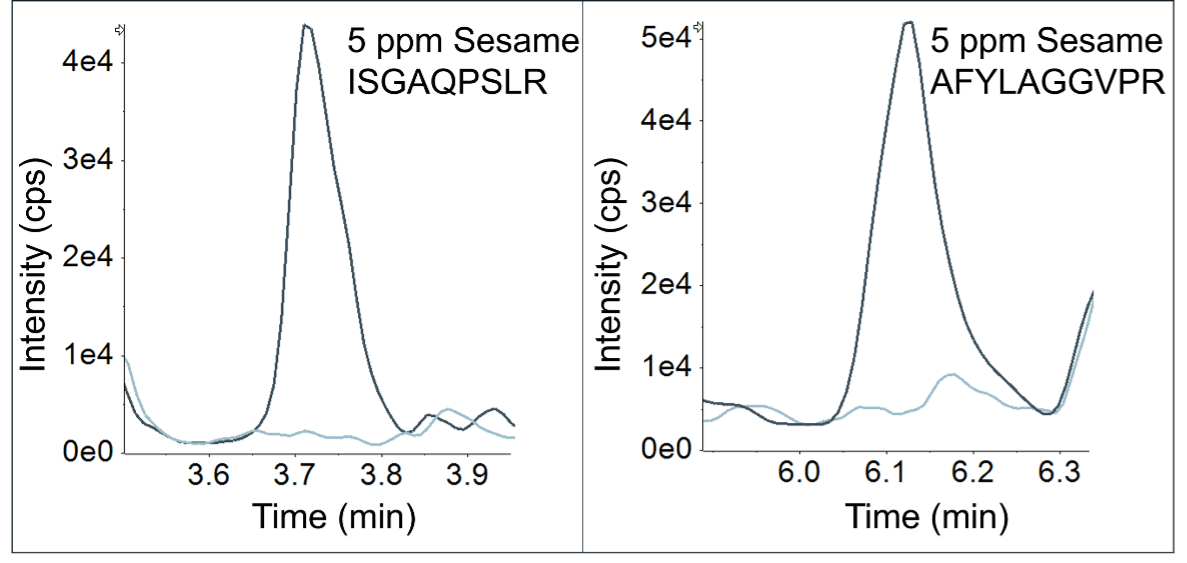Detection of sesame peptides and 12 other food allergens using the SCIEX vMethod for food allergen testing
Sesame allergen screening using the SCIEX 7500 system
Simon Roberts1, Karl Oetjen1 and Jianru Stahl-Zeng2
1SCIEX, USA, 2SCIEX, Germany
Abstract
Testing for the presence of sesame allergens in food has recently been added to the United States food testing list. Here, two peptides from specific sesame proteins were selected and MRM transitions were added to the SCIEX vMethod for Food Allergen Testing. Method was tested in cookie dough using the SCIEX 7500 system and provided 5 ppm detection with good repeatability.

Introduction
In 2021, the Food Allergy Safety, Treatment, Education, and Research (FASTER) Act was passed in the United States. The FASTER Act requires all foods sold in the United States that contain sesame to declare it as an ingredient or state “Contains: Sesame” immediately after the ingredient list.1
The SCIEX vMethod application for food allergen testing previously provided a workflow for sample preparation and LC-MS/MS detection of 12 distinct allergens, including egg, milk, almond, Brazil nut, cashew, hazelnut, pine nut, pistachio, pecan, walnut, peanut and soy2,3. After evaluating 24 different sesame peptides4, 2 of the most sensitive peptides were selected (Figure 1) and added to the SCIEX vMethod (Table 1).
Figure 1. LC-MS/MS chromatograms for Sesi3, Sesi4, Sesi6 and Sesi7 peptides of sesame proteins.
Table 1. MRM parameters for 2 sesame peptides. |
Results
Ten replicate injections of cookie dough spiked with 5 ppm sesame flour (Figure 2) showed good repeatability with a CV of 3.7%. Good linearity of r2 = 0.998 was observed in a curve prepared with 5, 25, 100 and 250 ppm sesame flour. By including the MRM parameters for sesame peptides in the SCIEX vMethod for food allergen testing, the SCIEX 7500 system was able to reach a detection limit of 5 ppm for both sesame peptides tested.
Figure 2. Chromatograms for 2 peptides in sesame-free cookie dough (light) and cookie dough spiked with 5 ppm sesame flour (dark).
References
- H.R.1202- FASTER Act of 2021 117th Congress (2021-2022)
- SCIEX vMethod Application for Food Allergen Testing.
- New, Lee Sun et al. “Simultaneous Analysis of Multiple Allergens in Food Products by LC-MS/MS.” Journal of AOAC International 101,1 (2018): 132-145.
- Ma, Xiuli et al. “Comprehensive quantification of sesame allergens in processed food using liquid chromatography-tandem mass spectrometry.” Food Control 107 (2020): 106744.
 Click to enlarge
Click to enlarge Click to enlarge
Click to enlarge Click to enlarge
Click to enlarge